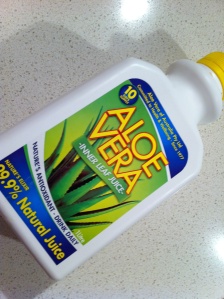So in my last post on skincare, I talked about the three basic steps everyone should be doing daily to begin the process of achieving healthy, glowing skin. By now you should be in the habit of cleansing, toning and moisturizing – day and night, and selected products based on your skin type, budget and personal circumstances.
If so, it’s now time to move on to the next step and tailor a skincare plan based on your specific needs. My last post was for those of you who wanted good skin. This post, however, is for those of you who want great skin. And I’m pretty sure everyone out there falls into this category!
Personally, I suggest you splurge on the next few steps, as your can buy cheap cleanser’s and toner’s as they are only on your face for about a minute.
The next few steps to add to your daily regime are as follows:
1. Exfoliate
Invest in a good exfoliating scrub for the face. I recommend you exfoliate every second day as exfoliating the skin scrubs away the dead skin on the outer layer of skin.You don’t want to scrub too vigorously, as this will irritate the skin or even leave scars. Always exfoliate in light, circular motions for about a minute, the rinse of with lukewarm water and pat dry.
I always exfoliate in the morning after cleansing, then follow with an eye cream and serum.
2. Add an Eye Cream
One of my absolute pet peeves is when people use their ordinary, daily moisturize around the delicate eye area. Ladies – and gents – this is soooo wrong! You need to use an eye cream as the ingredients used are specifically targeted to that area and are far more concentrated than the ingredients used in your moisturizer. I know they’re pricy but they are certainly worth the price if you choose right. That includes people in their late teens and early 20’s. It’s never too early to use an eye cream.
The obvious choice is to go for a cream that fight’s wrinkles. But make sure you don’t confuse wrinkles with sagging, tired eyes, because there are creams targeting that specific issue as well. For people who have young, supple skin, the aim is to maintain it’s health and appearance, therefore choose a cream that is high in antioxidants.
3. And a Serum…
Serum’s are liquid formulations, rather than moisturisers of lotions, and are similar to gel. They are that are specifically targeted to aid specific skin issues. Serum’s are used as a layering formula and are the most potent of products. There are serums to address almost every skincare concern, enabling you he flexibility to integrate targeted treatments into your existing beauty routine.
Serums should be used right after cleansing, added closest to the skin for the best results.
4. Finally, use a Mask
Mask’s come in a variety of different forms, from peel off to cream masks. Again, you should select a mask that works in accordance to your everyday skin needs, as they provide the nourishment your skin needs from the outside and contain a variety of vitamins and minerals – depending on the type of mask you choose.
Remember to keep things simple. Some days your skin just needs to rest and breathe, so adding more products on top of products will counteract all the hard work you are putting in.
But skincare doesn’t stop at the neck. The rest of the skin on your body needs care as well. That shall be in my next post:-)




